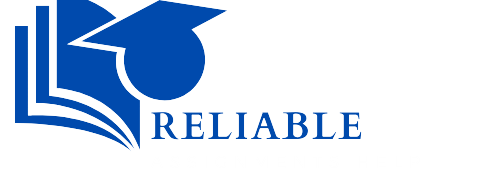Primary Source Analysis
Paper Guidelines
Your essay will consist of 3-4 pages double spaced. Proper citations are required. You will make a textual and contextual analysis. The questions provided below must be addressed. You should review the primary source analysis document on Brightspace for further reference. You need to use at least 2 secondary sources (it can be Egger and Berkey or any additional academic source) and include at least 4 citations from these secondary sources in addition to the citations from your primary source. Proper citations are necessary for both primary and secondary sources.
You can use any referencing style you prefer: Chicago, MLA, APA. Whenever you are addressing a specific information from the lectures or the slides, you are required to insert a footnote and provide the necessary reference such as (Week IV, Monday, Lecture/Slide on the Fatimids). The deadline is Friday (August 2) 10pm. You must email me your essays before the deadline.
You don’t have to address / answers all the questions listed below as your document might not be suitable to answer all these questions. The guideline below is to guide you for types of questions you need to answer and the structure you need to apply.
The Guideline:
The primary source analysis paper aims to engage students in critically examining historical documents through detailed textual and contextual analysis. This involves understanding the source’s significance, purpose, and impact on its contemporary audience and its relevance to historical scholarship.
Instructions:
- Textual Analysis:
Carefully read the primary source multiple times.
Annotate the text, noting/highlighting significant phrases, terms and sentences
- Contextual Analysis:
Research the historical context of the document. Understand the time period, the author, the intended audience, and the broader social, political, and economic conditions.
Writing the Paper:
- Introduction: Introduce the primary source, its author, and its historical context. State the purpose of your analysis.
- Textual Analysis: Analyze the language, style, and structure of the document. Discuss key terms, phrases, and the overall tone.
- Contextual Analysis: Place the document within its historical context. Explain the events, conditions, or situations that prompted its creation.
- Conclusion: Summarize your findings and discuss the significance of the document in historical scholarship.
Detailed Questions for Analysis:
Textual Analysis:
- Who is the author of the document, and what is their background?
Investigate the author’s life, position in society, and potential biases. How might their personal experiences and status influence their perspective in the document?
- What is the purpose of the document?
Determine whether the document is intended to inform, persuade, record, or serve another function. What specific goals does the author aim to achieve with this document?
- Who is the intended audience, and how does the document address them?
Analyze who the document was meant for and how this audience might have influenced the content and tone. Does the author use specific language or arguments tailored to this audience?
- What are the key themes and messages conveyed in the document?
Identify and explore the central ideas, arguments, and messages presented in the text. How are these themes developed and supported by the author?
- How does the language and style of the document reflect its purpose and context?
Examine specific words, phrases, and stylistic choices. How do these elements contribute to the document’s effectiveness and reflect its historical context?
- Are there any notable rhetorical devices or strategies used in the document?
Identify rhetorical techniques such as metaphors, analogies, repetition, or appeals to emotion and logic. How do these strategies enhance the document’s persuasiveness or impact?
- What assumptions or presuppositions does the author make?
Consider what the author assumes to be true or accepted by their audience. How do these assumptions shape the arguments and perspectives in the document?
Contextual Analysis:
- What historical events or conditions influenced the creation of the document?
Describe the broader historical context in which the document was created. How do the events, social conditions, or political situations of the time influence the content and purpose of the document?
- How does the document reflect the social, political, and economic conditions of its time?
Analyze how the document mirrors or responds to the social, political, and economic environment of its era. What specific issues or conditions are addressed or implied?
- What were the contemporary reactions to the document?
Investigate how the document was received by its contemporaries. Were there significant supporters or detractors? How did it influence public opinion or policy?
- How does the document fit into the larger historical narrative?
Place the document within the broader context of historical events and trends. How does it contribute to our understanding of the period? Does it mark a turning point or exemplify broader trends?
- What is the significance of the document in historical scholarship?
Evaluate the document’s impact on historical study. How have historians interpreted and used this document to understand the past? What debates or controversies has it sparked?
- What other primary sources could complement this document?
Identify other primary sources that might provide additional perspectives or context. How could these sources be used to create a more comprehensive understanding of the historical period?
- What long-term effects or influences did the document have?
Discuss the document’s lasting impact on subsequent historical developments. How did it influence later events, ideas, or movements?
Important Things to Emphasize / Analyze:
Author’s Perspective and Bias: Consider how the author’s background and position might influence their perspective.
Historical Context: Understand the time period and the socio-political conditions surrounding the document’s creation.
Language and Style: Pay attention to the choice of words, tone, and rhetorical devices used by the author.
Intended Audience: Reflect on how the intended audience might have received and interpreted the document.
Themes and Arguments: Identify and analyze the main ideas and arguments presented.
Impact and Significance: Evaluate the document’s influence on contemporary events and its lasting significance in historical scholarship.
